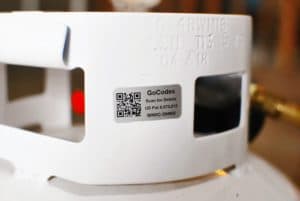A functioning office environment depends on its inventory. If crucial equipment and supplies are missing, the employees will have difficulty completing their daily tasks and operations.
How can a business keep this from happening? Start by making an office supply inventory list.
Many office managers underestimate the importance of office supply inventory lists and end up missing critical office assets.
Don’t worry! That will not happen to you after reading this article.
Let’s begin.
In this article...
Know What Items to Account For and Prepare Your Master List
Creating a comprehensive office supply inventory begins with knowing all the supplies you should have at your disposal.
Thankfully, there’s an outstanding organizing tool you can use to account for them.
Skilled office managers use the office supply master list.
An office supply master list is a central inventory document of all necessary expendable supplies that have to be restocked from time to time.
It enables your office manager to know which items they should include in their order when restocking, in addition to providing insight into usage trends.
If you had to compile a new office supply inventory list from scratch every month, you would have to figure out which items are the most important and probably come up with a slightly different list every time.
You’re also likely to forget to include some items, forcing you to make new orders several times a month. That’s not an efficient way of managing office supplies.
A master list will change that.
The best thing about master lists is that they cost nothing to write, making resupplying so much more effective. You’ll get a crystal clear idea of which office supplies are critical to your office.
For instance, according to information from Rubicon, a food waste software company, the average American worker uses roughly 500 disposable coffee cups a year. If you’re running a busy office with many coffee drinkers, your master list might include disposable cups.
As mentioned earlier, a master list features the expandable office items that need to be regularly resupplied.
While these vary for every business, they generally include:
- Pens
- Copy paper
- Post-its
- Tape
- Scissors
- Staples
- Printer cartridges
Don’t forget the other items that aren’t necessarily office supplies, but your office needs them, regardless. We’re talking about:
- Trash bags
- Handsoap
- Toilet paper
- Disposable cups
Finally, add the various office tech your employees rely on for their daily tasks. These can be:
- Monitors
- Company tables
- Projectors
- Printers and scanners
- Computers
After you’ve assembled your master list, always double-check all the items so that you’re sure the list is complete. Now, you’re ready to check the level of supplies available.
Manage Your Supply Storage Properly
When office managers neglect to manage the supply closet, doing inventory lists becomes that much more challenging.
There are open boxes all over the place, and different supplies are mixed. If the office manager wants to do an office supply inventory, they have to pull everything out, re-organize it and count it from scratch. An otherwise productive day is spent on an inane, time-consuming task.
It’s much more efficient to keep your supply storage organized at all times. It doesn’t just save your time, but that of your workers as well.
If they can’t find the supplies they need, employees will waste their time digging through storage instead of completing their tasks. Worse yet, they’re likely to disrupt other employees while doing it.
How many times have you heard someone ask “have you seen the….” in your office? It’s usually thrown around in offices where storage maintenance is sub-par.
Research shows that an average employee will waste 759 hours per year dealing with environmental distractions. By neglecting to keep your office supply storage neat, you’re creating a distracting environment for your employees.
Whether it’s through searching for office supplies or asking other coworkers for help, disorganized office supplies will keep your workers distracted and make keeping an inventory significantly harder.
Proper supply management is imperative, so here are a few simple tips on how to do it.
Keep your supply storage organized by grouping supplies that go together.
For example, it makes perfect sense to keep your printer paper next to your toner cartridges. Employees will instinctively know where to look instead of picking through every part of your storage. Your supply storage will remain tidy, and it will be easier to do inventory later on.
If you haven’t already, appoint a person in charge of the office supply storage. The person in charge should check the storage in regular intervals to make sure it’s neatly organized.
That person will usually also be responsible for making the office supply inventory list because they’re most familiar with all the items in the office.
Also, don’t forget to mark boxes.

If you don’t put labels on your containers, employees will pick through every box until they find what they’re looking for and usually leave a mess behind. With labels, workers can read the content of the box, so they don’t have to go through every one.
Have a Workflow for Managing Supply Requests
If you’re running a busy office with loads of supplies and office equipment, you’re going to have many supply requests.
You need a workflow for managing them effectively. Without an established supply request procedure, all of your employees’ demands to restock on certain items would overwhelm your office manager.
For example, employees might make supply requests in different ways. Some may walk up to the office supply manager and ask them to purchase specific items, while others might submit their requests via email, or get in touch using communication software, like Slack.
If ten employees made ten different requests instead of using a single unified channel, it’s easy to imagine how hectic managing supply requests would be. Now imagine if it was an office with 50 or more employees. The task becomes virtually impossible.
In addition, employees will often request the same supplies to be ordered.
With an established workflow, you can check if the same supplies have already been ordered to prevent duplicate requests. This will save your company a substantial amount of resources.
You should ask yourself: how can I establish a workflow to manage my staff’s supply requests?
If you’re operating in a bigger office, implement an office inventory management solution. When your office has to deal with many requests for consumable supplies, it’s hard to keep tabs on your entire inventory.

Instead of having to stay on top of an increasingly complicated supply request process, you can track your office inventory with a SaaS solution and reorder new supplies when you start running low.
For example, an inventory management solution lets you set up alerts for low supplies. The biggest advantage is that you can automate the entire process, making your workflow more effective.

Second, establish a unified request procedure for specific supply requests.
It can be as simple as a supply request email address, as long as all requests are kept on the same channel.
That way, your office manager won’t be overwhelmed by requests coming from all sides. After the new supplies arrive, have your manager add them to your inventory management software.
Use Your Supply List to Work Out a Budget
Your office supply inventory list is a helpful tool for working out a budget.
While it’s often difficult to save money on utilities like electricity or water bills without a hefty investment into new technologies, you can curb your spending on office supplies. But to do it, you need to know exactly what your expenses are.
After reviewing your supply list, you’ll have a data-backed overview of your monthly spending on essential supplies.
Once you understand your budget, you can figure out ways to get a better deal on office supplies or reduce spending in other ways.
If you find you can’t afford all the supplies you’ve been buying, settle on the essentials. Your supply list will inform you what items your workers rely on most for their everyday operations.
It keeps you from hoarding unnecessary office supplies that your workers don’t need.
For example, if you’ve noticed you still have half of your highlighters from a couple of months back, you can leave that entry out of your office budget.
However, if you’ve installed a new photocopier for your workers, and your office supply list tells you they’ve been going through the paper supplies faster than usual, redistribute the money you’ve saved highlighters and use it to buy more paper.
Here are some of the best practices for using your office supply inventory list to improve your budgeting.
- Actively monitor your spending on office supplies every month. A well-written office supply inventory list is similar to a financial report; it helps you keep tabs on your spending. If you notice you’ve gone over budget buying office supplies, allocate those resources elsewhere.
- Use your office supply list to calculate your monthly spending per employee. Once you’ve calculated your monthly spending per employee, you can readjust your budget when increasing your staff. That way, you won’t be caught off-guard when your office supply spending increases after hiring.
- Leverage your office supply list to track your annual spending on office supplies. While it’s a great practice to monitor and monthly spending, work out a yearly budget.
When you know how much your company spends on office supplies every year, you can make a better office inventory supply list and plan for more expensive purchases. If you reduce your yearly spending on office supplies, you can re-invest in office equipment, for instance.
Conclusion
You’ve made it! Now you understand how to write an all-encompassing office supply inventory list and some integral supply management practices.
If you integrate these tips into your workflow, you’re bound to have fewer problems managing your office supplies. Implementing a new practice isn’t simple, but it’s worthwhile.
Consider everything you’ve learned today and transform your asset and supply management for good.








